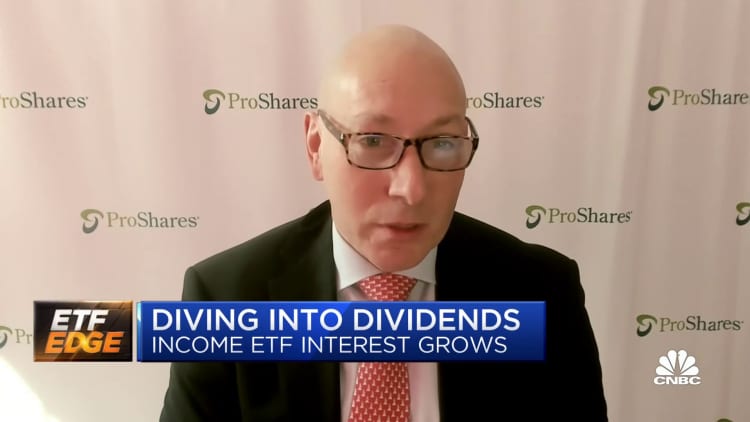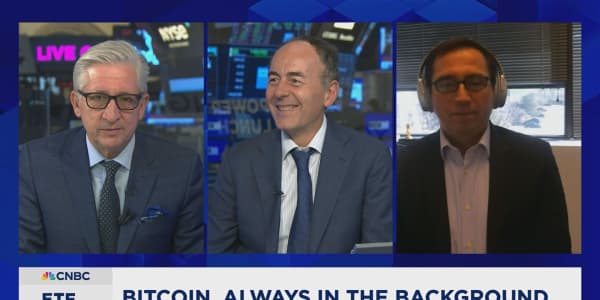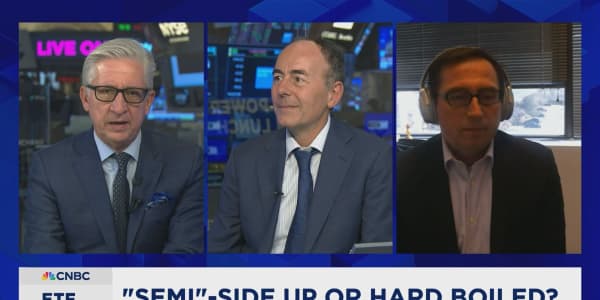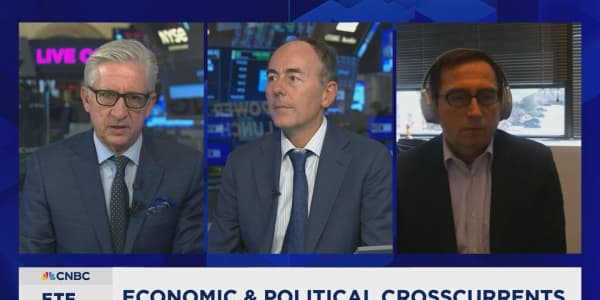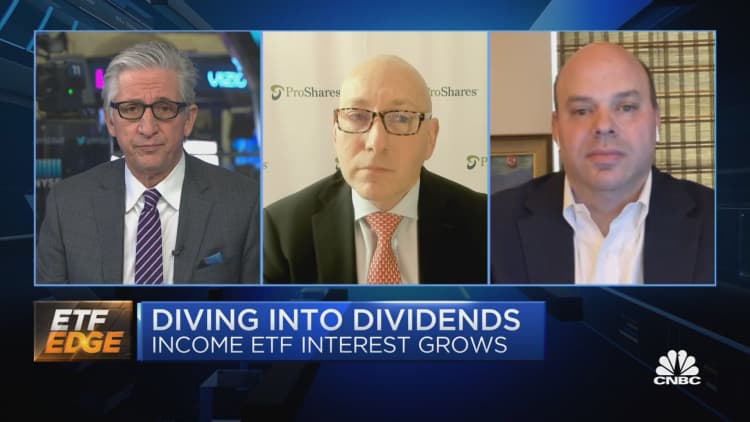
Investors are doubling down on dividend-based exchange-traded funds.
Dividend ETFs have seen significant inflows since inflation concerns spiked in 2021, with many notching gains greater than 20% last year:
- The iShares Core Dividend Growth ETF (DGRO) rose 24% in 2021
- ProShares' S&P 500 Dividend Aristocrats ETF (NOBL) climbed 23%
- Vanguard's Dividend Appreciation ETF (VIG) gained 22%
- The SPDR S&P Dividend ETF (SDY) was up 22%
As flows into these funds accelerate, it's more important than ever for investors to understand the difference between the two main types of dividend ETFs, Simeon Hyman, global investment strategist at ProShares, told CNBC's "ETF Edge" on Monday.
"The key distinction here ... is the distinction between the high yielders and the dividend growers," Hyman said.
ProShares' NOBL ETF tracks companies that have not just maintained but grown their dividend for at least 25 consecutive years.
"That tells you that you've got staying power in a name and you've got that important ability to grow those dividends through a cycle," Hyman said, adding that those qualities are "extra important in an inflationary environment."
NOBL's top holdings include steel giant Nucor, food processing company Archer-Daniels-Midland and Exxon Mobil. The ETF has a roughly 21% weighting in the consumer staples sector and just more than 20% in industrials.
"Consistency perhaps is more important than an unusually large hike that you haven't seen before from some of the more cyclical names," Hyman said.
Even so, ProShares sees the value in some of the technology giants, offering the S&P Technology Dividend Aristocrats ETF (TDV) for consistent dividend payers in that hot space.
"Technology dividends are becoming an increasingly important piece of the marketplace and that's a place where that distinction between dividend growth and buybacks is so important," Hyman said. "People think it's the same thing but a buyback is just telling you that the company had good times yesterday while an increase in dividend, because you never want to cut one, is a much more forward-looking indicator."
Recent history has favored dividend growth over yield, CFRA's head of ETF and mutual fund research, Todd Rosenbluth, said in the same interview.
If you compare Vanguard's Dividend Appreciation ETF (VIG) and its High Dividend Yield ETF (VYM), "VIG has outperformed in the last three years by over 300 basis points by favoring those more growth-oriented sectors including technology as opposed to the above-average yields that you'd find within VYM," Rosenbluth said.
He expected VIG to keep winning out thanks to its sector weightings.
NOBL, for example, is heavily weighted toward staples, industrials and financials as a result of its 25-year cutoff. SDY, which requires its underlying companies to have raised their dividends for at least 20 consecutive years, is more balanced, with a higher weighting toward utilities stocks. VIG looks even shorter term, including recent dividend growers such as Microsoft.
"You really need to understand whether you're looking for growth or you're looking at yield before you go a step further," Rosenbluth said.
